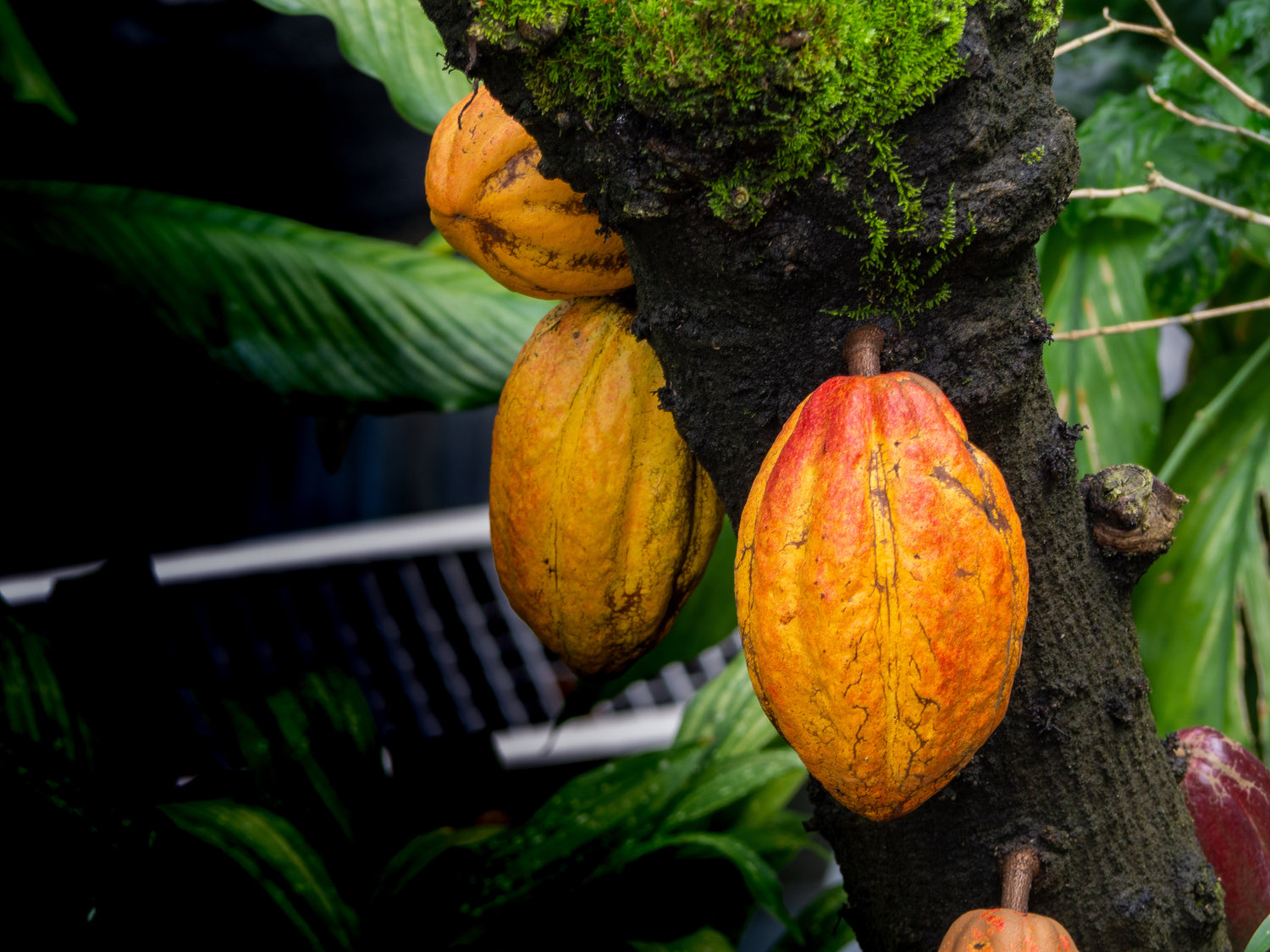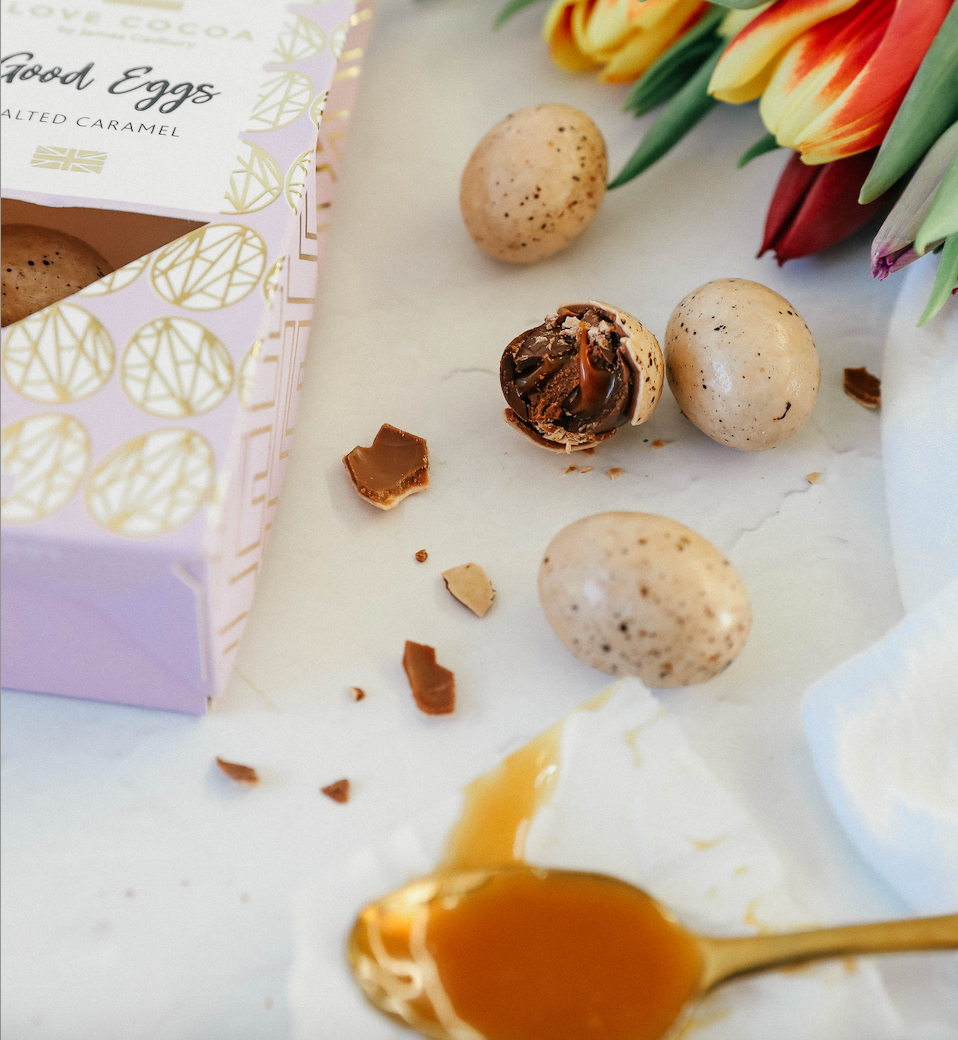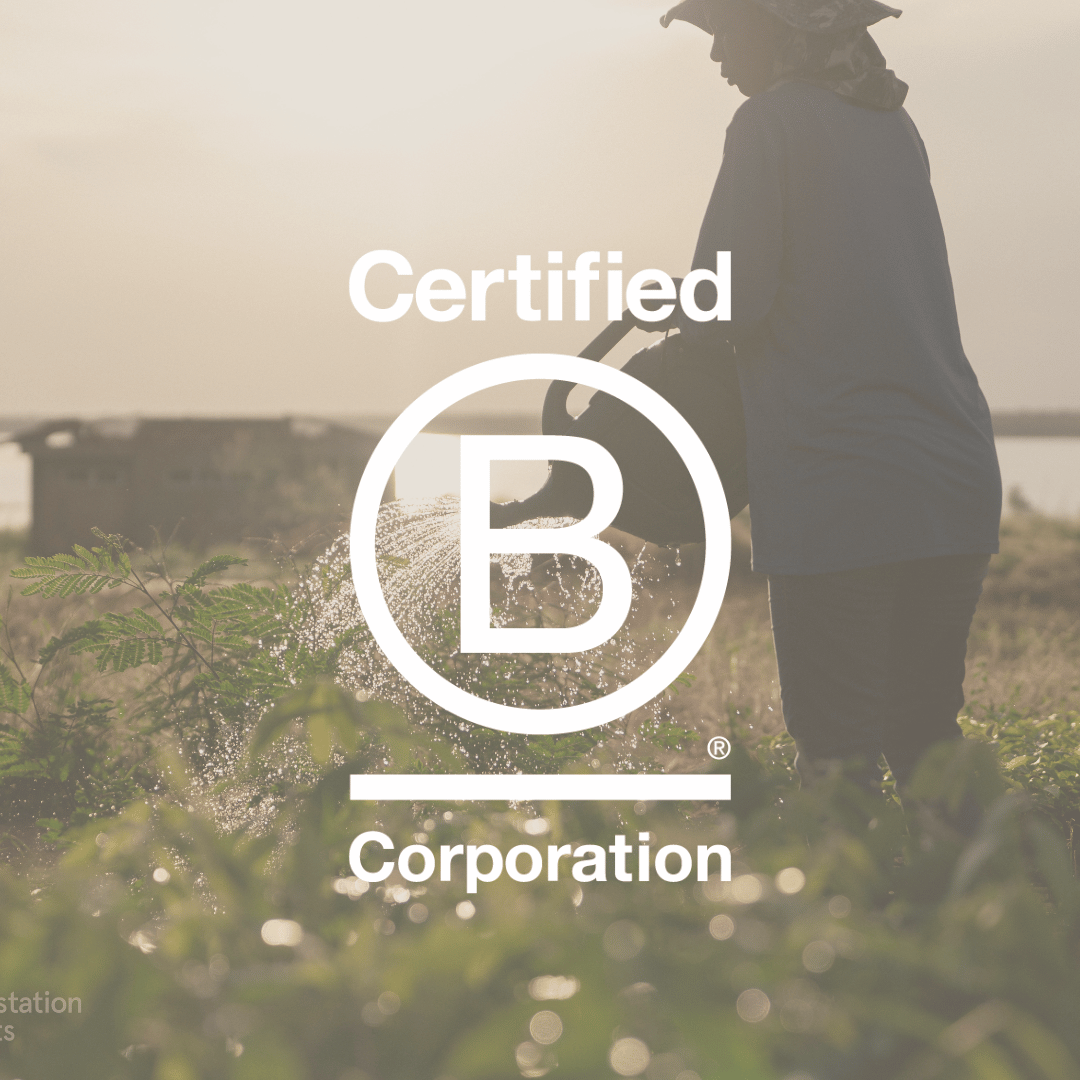The Aztecs believed that cacao fruit was a gift from the gods. Nowadays, we can enjoy a taste of heaven whenever we get the craving. But did you know that each cacao tree only produces enough fruit annually for around five of our delicious single-origin bars?
At Love Cocoa, we’re obsessed with knowing more about the quality of our ingredients and their origins. So we’ve put together the ultimate guide to the cacao fruit.
Is cacao a fruit?
You might have heard the terms cocoa beans or pods, but did you realise that cacao is a fruit, not a legume? Produced by the Theobroma cacao tree, each pod-shaped fruit contains pulp and around 40-60 seeds. And it’s the seeds that are fermented, dried and processed to produce the chocolate we know and love.
Where does cacao grow?
The cacao fruit starts its journey over 5,000 years ago in the Amazonian rainforest. In the wild, the Theobroma cacao tree thrives in the shade of the forest canopy, protected from drought, fierce heat and extreme cold.
Cacao now grows anywhere that delivers the same warm and humid conditions, including West Africa and tropical parts of Asia. Incredibly, cacao trees can take up to five years to bear fruit. And even then, they only produce around a thousand fruit per tree – just enough for a kilo or two pounds of chocolate, depending on the cocoa percentage.
Are there different types of cacao fruit?
The Swedish botanist Carl Linnaeus was so fascinated by the cacao tree he officially named it Theobroma or “food and drink of the gods.” And he categorised the three main types of beans we know today:
- Trinitario
- Criollo
- Forastero
Of course, each variety has its own unique flavour profile. And just like wine, that can be influenced by terroir and how the fruit is grown.
Forastero is the most widely cultivated cacao, making up 80% of worldwide production. It can be acidic, but the full-bodied beans produce a bar with an intense chocolate hit.
The chocolate connoisseurs' choice, Criollo, is considered the finest quality cacao bean. It's incredibly scarce, accounting for just 3% of the world's cacao crop. But it produces a beautifully balanced bar with floral and fruit notes.
Trinitario is the result of cross-pollination between Criollo and Forastero trees. So it's hardly surprising that it produces chocolate with the powerful cacao hit of Forastero and Criollo's floral, nutty, coffee aromas.
From cacao fruit to chocolate: what’s the process?
So how does chocolate go from bean to bar? Once harvested, the cacao fruit goes through several processes before being made into chocolate.
First, producers leave the seeds and pulp to ferment. During this time, natural microbes feed on the sugars in the pulp and break down the phytic acid. It’s this process that produces that creates the chocolate flavours and aromas we know and crave.
Next, we dry the seeds before roasting them to unlock their unique flavor profile. Then we crack them and separate the meat from the shell. After that, we grind the cocoa nibs into cocoa mass and press them to separate the cocoa butter from the cocoa powder.
Finally, we combine the cocoa mass and cocoa butter in varying quantities. Depending on the type of bar, we add milk and sugar. Then we conch the chocolate, which involves continuously stirring it over several days, to ensure a silky smooth texture and mouthfeel.
In case you’re wondering, every part of the cacao fruit can be used to make chocolate. In 2019, Swiss chocolatier Barry Callebaut introduced the Wholefruit chocolate bar using 100% of the fruit. It utilises the cacao pulp as a natural sweetener, giving each bar a unique flavour. And it’s the way forward for sustainable chocolate production.
What else is cacao fruit used for?
But cacao fruit is about much more than chocolate. This incredibly versatile product can be used in skincare, hair products, drinks, and confectionery.
Cocoa butter is the fat derived from the cacao fruit that gives chocolate its incredible mouthfeel. And because it melts at body temperature, it provides lotions and creams with a luxurious texture on the skin. Cocoa butter is also vegan making it a good choice for vegan desserts.
Cocoa powder is an effortless way to add a flavour boost to coffee, fruit, yoghurt and more. And who doesn’t love a warming hot chocolate when the temperature drops?
Other tasty by-products of the cacao production process include cacao liquor and juice. Juice is pressed from the pulp and has a light, floral-fruity flavour. Combined with cocoa butter, it has a fantastic sorbet-like texture that enhances your hot drinks and cocktails.


